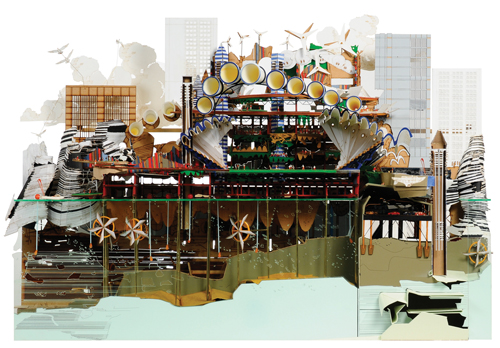Architecture
Homework Help & Tutoring
We offer an array of different online Architecture tutors, all of whom are advanced in their fields and highly qualified to instruct you.
Architecture

Image source: http://www.ucl.ac.uk/bartlett/architecture/images/pictures/unit_011/08-09/U011_09_Bursa_002.jpg
Architecture is a field of study which is related to the design, art design, and creation and construction of objects and spaces. Architects design buildings, bridges, settlements and cities, interior equipment of apartments, office buildings, etc.
Style is the descriptive way of designing a building that is characteristic for an epoch.
Throughout history, architecture has gone through many characteristic styles such as: Egyptian, Mesopotamian, Chinese, Greek, Etruscan, Byzantine, Roman, Gothic, Renaissance, Baroque, Russian, Modern and others.
The most noticeable fact of all the old styles, such as Egyptian, Mesopotamian, and Greek is that all objects were dedicated to gods because people in that period of history lived their lives based around their religion.
Egyptian style:
Old Egypt, together with Mesopotamia, is considered to be the center of architecture. The stone was the basic building material. The most common objects were temples built in honor of their gods, and tombs in the shape of pyramids.
Mesopotamian style:
Mesopotamian architects invented the construction of arches, vaults, and domes. The soil was the only building material and it was used for making bricks. The great cities of Ur and Vavilon (Babylon) were built in Mesopotamia with their famous temples and royal palaces.
Greek style:
The most common object of Greek style is the temple. The temple is a building built in honor of a deity. Within the temple, there were sculptures and votive gifts. The foundations were made of stone. The most important part of the temple is the column. There are three typical column design: Doric, Ionian and Corinthian.
Roman style:
Romans invented concrete which brought great possibilities for architecture development. There are a great number of architectural masterpieces from that period. Significant works of Roman construction are: temples, theaters, triumphal gates, Roman basilicas, bridges, aqueducts, viaducts, fortresses and streets.
Gothic style:
Gothic architecture developed in the first half of the 12th century until the 16th century in northern Europe. The characteristic sign of the Gothic style is a broken arc.
Renaissance style:
Renaissance architecture appeared in the 15th and 17th and it was born in Florence. Basically, this style is similar to Greek and Roman but with more developed constructive elements.
Baroque style:
This style had many decorations on the facade and inside the building. The grounds also had a lot of decoration with big fountains, green spaces and flower gardens.
Byzantine style:
Byzantine architecture originated in an area located in the territory of the Eastern Roman Empire.
Modern style:
Modern architecture has very simple forms without additional decorations, where construction itself becomes the most noticeable aesthetic element. Using the modern materials such as reinforced concrete, steel, prestressed concrete, glass and many other materials, architects are able to produce unique structures in which they can express themselves as individual artists. As a result, the modern world architecture has become very innovative and creative where architectural objects (building, towers, bridges...) represent the form of modern cities.
To fulfill our tutoring mission of online education, our college homework help and online tutoring centers are standing by 24/7, ready to assist college students who need homework help with all aspects of architecture. Our architecture tutors can help with all your projects, large or small, and we challenge you to find better architecture tutoring anywhere.
College Architecture Homework Help
Since we have tutors in all Architecture related topics, we can provide a range of different services. Our online Architecture tutors will:
- Provide specific insight for homework assignments.
- Review broad conceptual ideas and chapters.
- Simplify complex topics into digestible pieces of information.
- Answer any Architecture related questions.
- Tailor instruction to fit your style of learning.
With these capabilities, our college Architecture tutors will give you the tools you need to gain a comprehensive knowledge of Architecture you can use in future courses.
24HourAnswers Online Architecture Tutors
Our tutors are just as dedicated to your success in class as you are, so they are available around the clock to assist you with questions, homework, exam preparation and any Architecture related assignments you need extra help completing.
In addition to gaining access to highly qualified tutors, you'll also strengthen your confidence level in the classroom when you work with us. This newfound confidence will allow you to apply your Architecture knowledge in future courses and keep your education progressing smoothly.
Because our college Architecture tutors are fully remote, seeking their help is easy. Rather than spend valuable time trying to find a local Architecture tutor you can trust, just call on our tutors whenever you need them without any conflicting schedules getting in the way.






